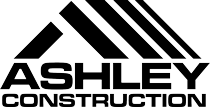Commercial Roofing
If you’re in the process of constructing a new building or planning the replacement of an outdated roof on an existing building, there are three main types of commercial roofing systems to consider:
TPO (Thermoplastic Olefin or Polyolefin) – TPO roofing systems are among the fastest growing in the commercial roofing industry. Made of durable material with low-temperature flexibility and a high-temperature tolerance, these systems are exceptionally resistant to ultraviolet, ozone and chemical exposure. Most TPO systems meet and exceed the new “green roof” reflectivity ratings in municipal and architectural specifications. TPO systems can be fully-adhered or mechanically fastened, depending on the application. These systems are highly resistant to tears, impact and punctures with good flexibility to allow for building movement. The TPO system has proven to be an excellent over-lay application for an existing built-up roof.
EPDM (Ethylene Propylene Diene Monomer) – EPDM systems have taken a back seat in the single-ply market to TPO, PVC, and other “green roof” systems”. Because EPDM is a rubber roof, it has more market volatility and therefore has been priced out of the single-ply equation. This roofing system is extremely durable, but EPDM lacks the reflectivity ratings of its counterparts.
Metal – There are many different metal roof styles and designs. The greatest advantage of a metal roofing system is the durability. Metal roofs can withstand large diameter hail, extremely high winds and are impervious to temperature extremes. Metal roofing systems are also very lightweight in comparison to some of the other commercial roofing systems available. These systems can also be more aesthetically pleasing and have seen a surge in architectural appeal in recent years.
